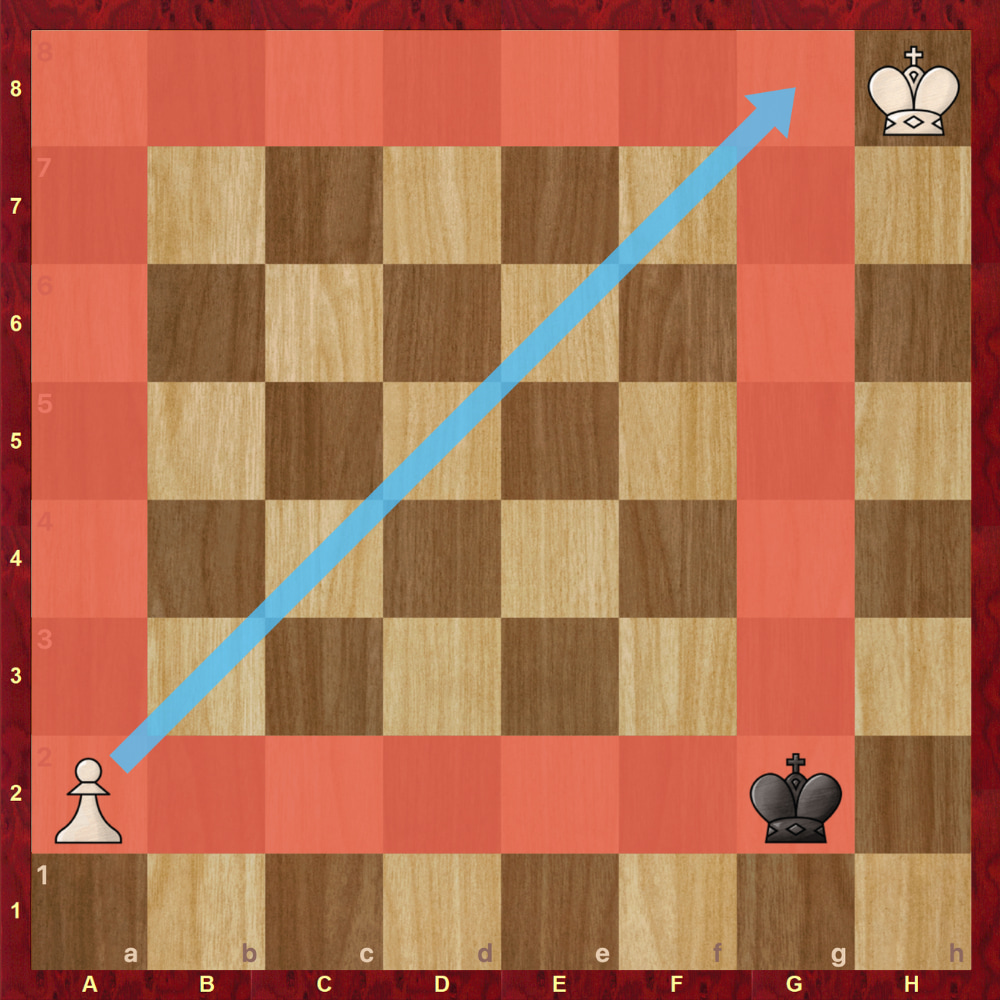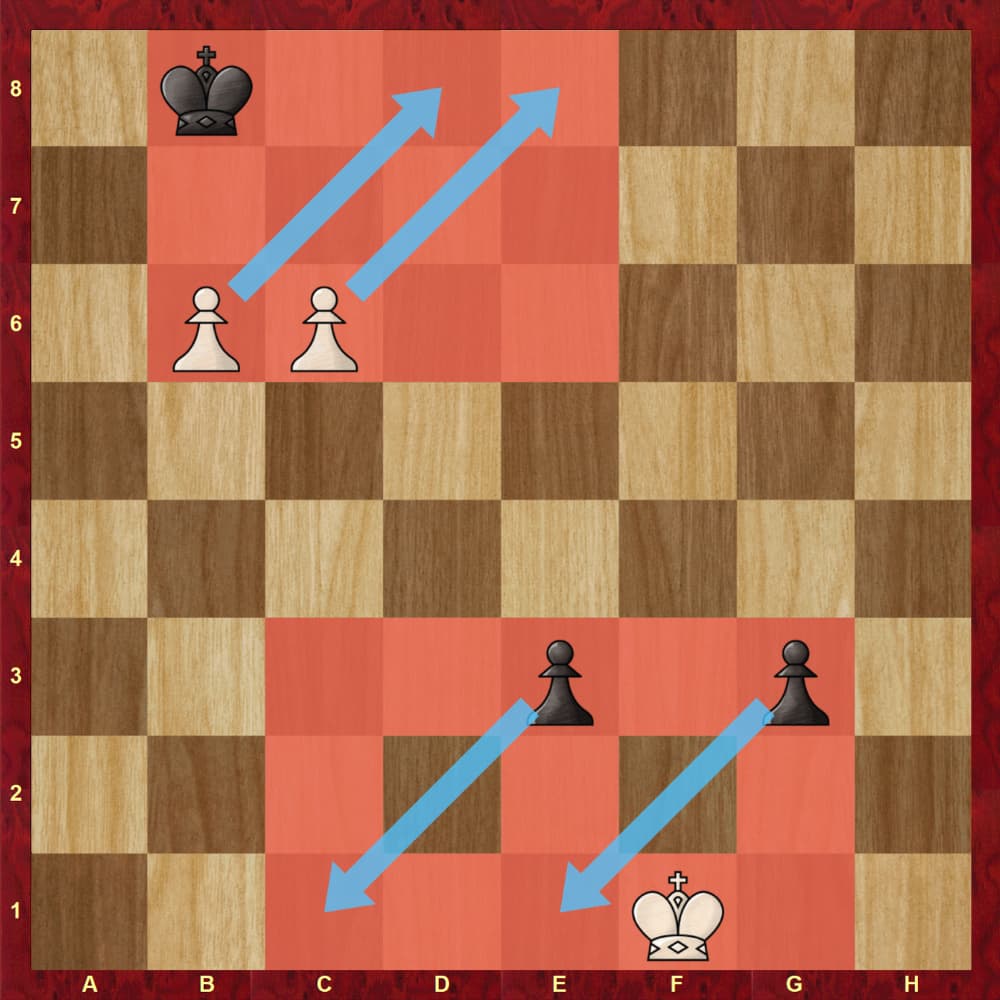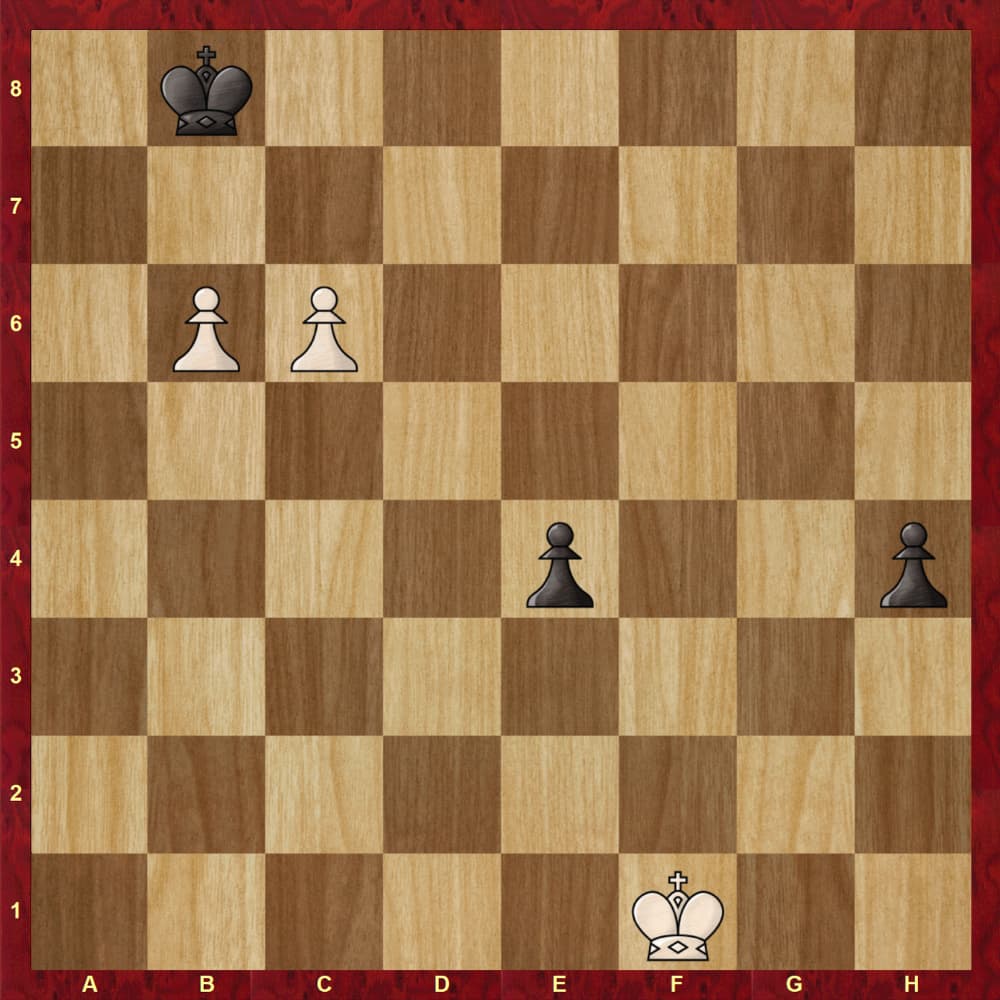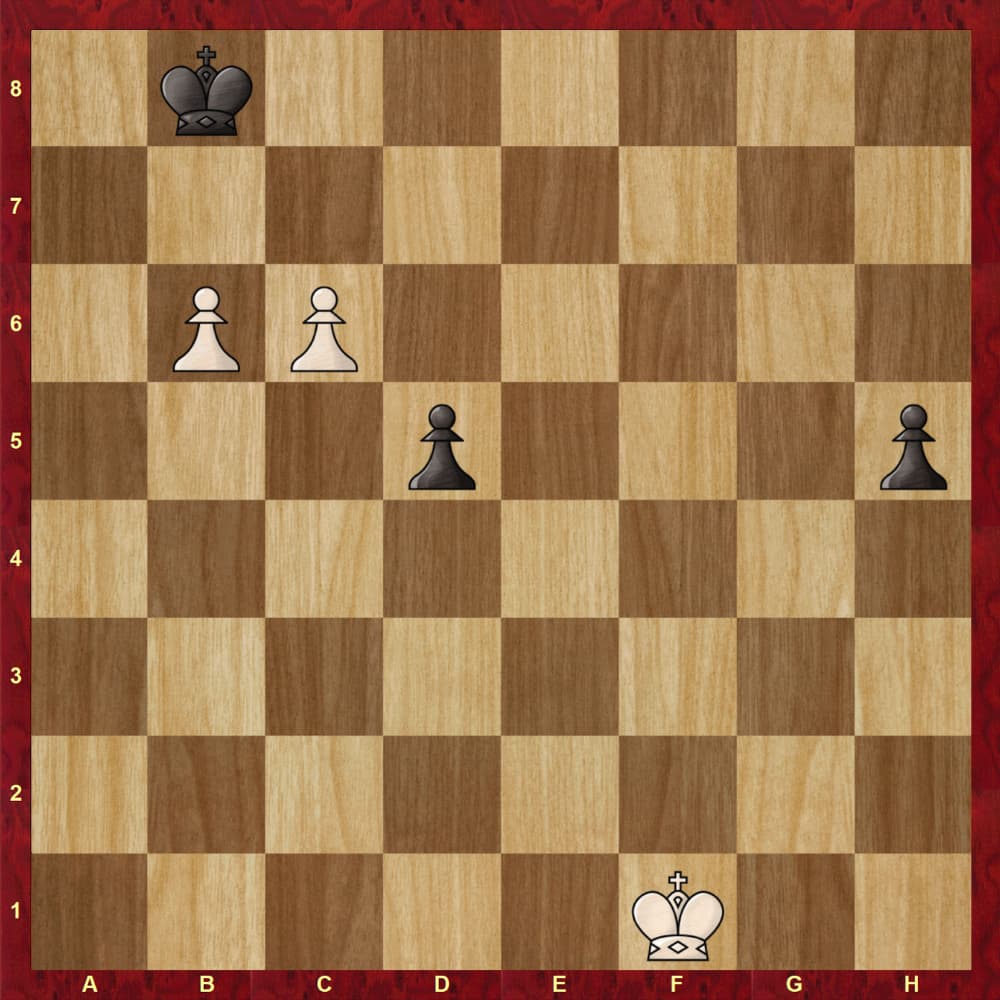
There’s an important rule to learn in King and Pawn endgames called the Pawn square rule, also known as the rule of the square. This is crucial to know for when you find yourself in a King and pawn endgame vs a King, with the King chasing the pawn in attempts to prevent it from being promoted.
When you’re the one with the pawn, the goal is to move the pawn to the other side of the board, the back rank, to promote. In fact this must be done if you’re going to win the game. If the pawn fails in being promoted, it’s an automatic draw due to insufficient material.
In order to promote the pawn, the pawn must either be escorted with the King to prevent capture, or the enemy King must be far enough away for the Pawn to reach the end of the board before the enemy King is able to meet the pawn at the back rank square.
This is where the Pawn Square Rule comes into play.
Before moving the pawn running for the end of the board, before attempting this, you’ll want to know if the pawn will reach the back rank before you make a run for it. To calculate the moves in your head is difficult. In fact, calculating so many moves ahead is one of the myths in Chess that Grandmasters are able to calculate more moves ahead than everyone else. This isn’t the case is most cases as we learned from Maurice Ashley in his TED talk. Grandmasters use techniques and rules, like this rule, to determine if their pawn will make it before being intercepted by the enemy King quicker and more efficiently.
So instead of taking all that time calculating all the moves in your head, we can use this simple rule that tells you what to do.
What Is The Square Rule?
Visualize a diagonal line starting from the pawn that travels to the end the board. This forms the diagonal line that outlines the squares that determine if the opposing King will be able to stop the pawn from promoting.
The Rule of the Square states that if the King can get inside the square, the pawn will be captured. If the king can not get inside this square the pawn will promote.
Exception: Like any other rule or principle in Chess, there are exceptions. But there is only one main exception to the square rule to keep in mind. If the pawn is still at the starting position, you must visualize the pawn being one square forward because of the pawn being able to move two squares forward on its first move.
rewordThere are some other exceptions to the Pawn’s square rule (when other pieces blockade the path of either the pawn or the King), but we will deal with these later.
It is also a useful rule to apply when deciding whether a pawn is safe to leave the others and dash for promotion.
Examples
Example #1
The position below is a bare bones example of a King and a pawn versus a King. The pawn is still at the starting position so the exception to the rule applies here.
Example #3
In the position below, the game is a draw if and only if Black plays 1…Kf3. All other moves lose. White is going to play 2.b4 and Black has to assure that his King can be placed inside the square 2…Ke4.
Square Rule For Separated Pawns

Now that we’ve gone over the square rule for King and Pawn endgames, what happens if there’s more than one pawn to deal with? This is another exception to the rule. Connected pawns are stronger than separated pawns in most cases, but again, there are exceptions.
image
If there are two pawns separated by one or more squares once they reach the 6th rank, the enemy King cannot stop both pawns from promoting. while he is able to stop the connected pawns. However, a King can prevent and capture two connected pawns, making separated pawns stronger than connected pawns in this position.
Example
In the position below, it’s White to move and will be unable to prevent the promotion of one of Black’s pawns, Black will win the game.
Two Pawns Separated By Two or More Squares

Another exception is when there are two pawns separated by two or more squares and have reached the fifth rank, the enemy King is also unable to prevent both pawns from promoting.
Square Rule For Two Pawns
Two Pawns Separated By Three Or More Squares

As you may imagine, the exception goes further. When two pawns are separated by three or more squares and have reached the fourth rank, the enemy King cannot stop both of them either. However, if one of these pawns is captured on the next move, the King can intercept the other pawn as well. This is known as the square rule for two pawns.
I hope this guide on the Pawn Square Rule helped you better understand the King and Pawn endgame. Instead of trying to calculate so many moves between the pawn being chased by a King, try to remember the rule of the square and apply it. It will be much easier and faster to determine if you can run the pawn down the board without protection from the King.
If you want to learn more of these types of guides, see the complete guide on Chess Rules.


